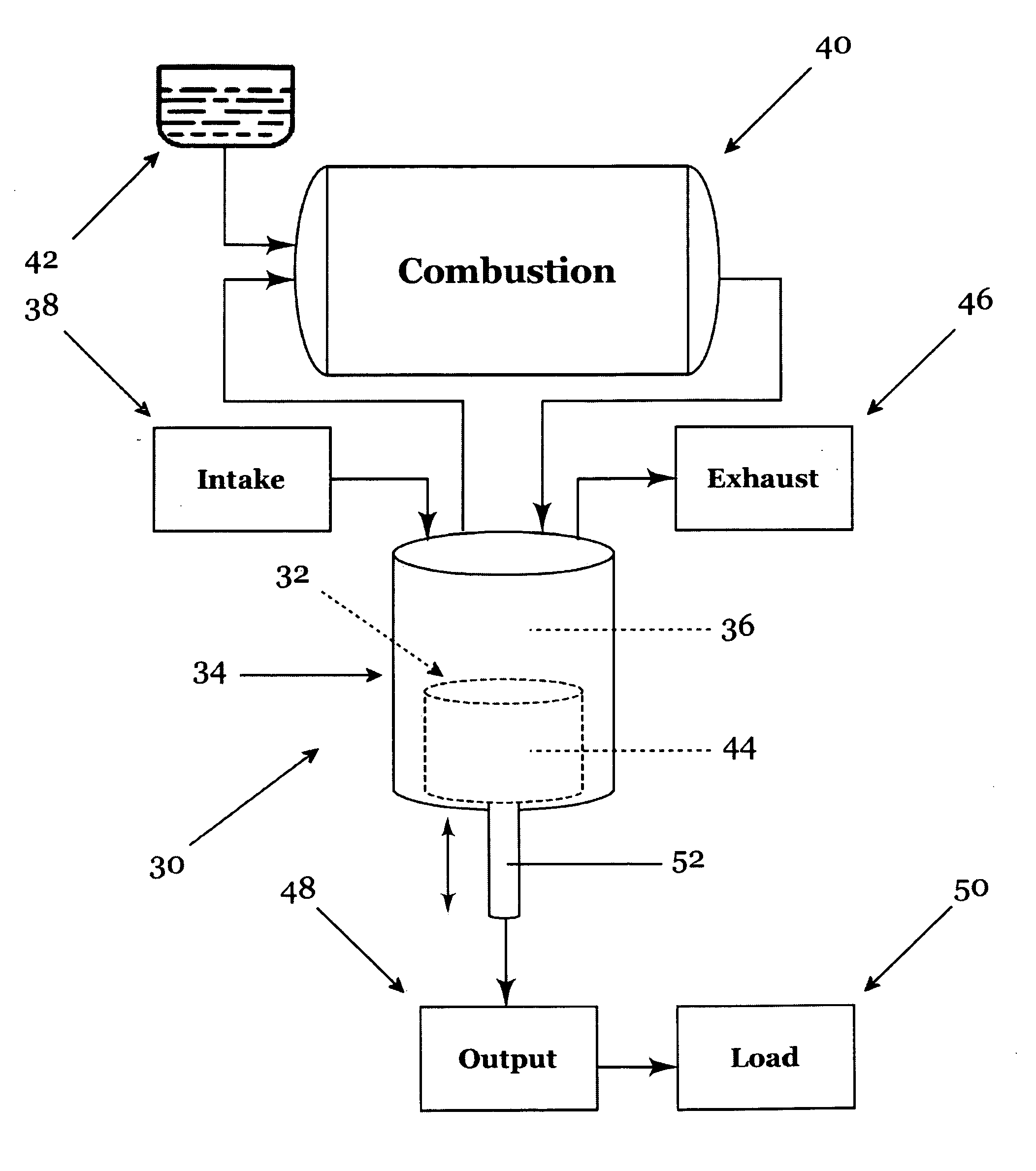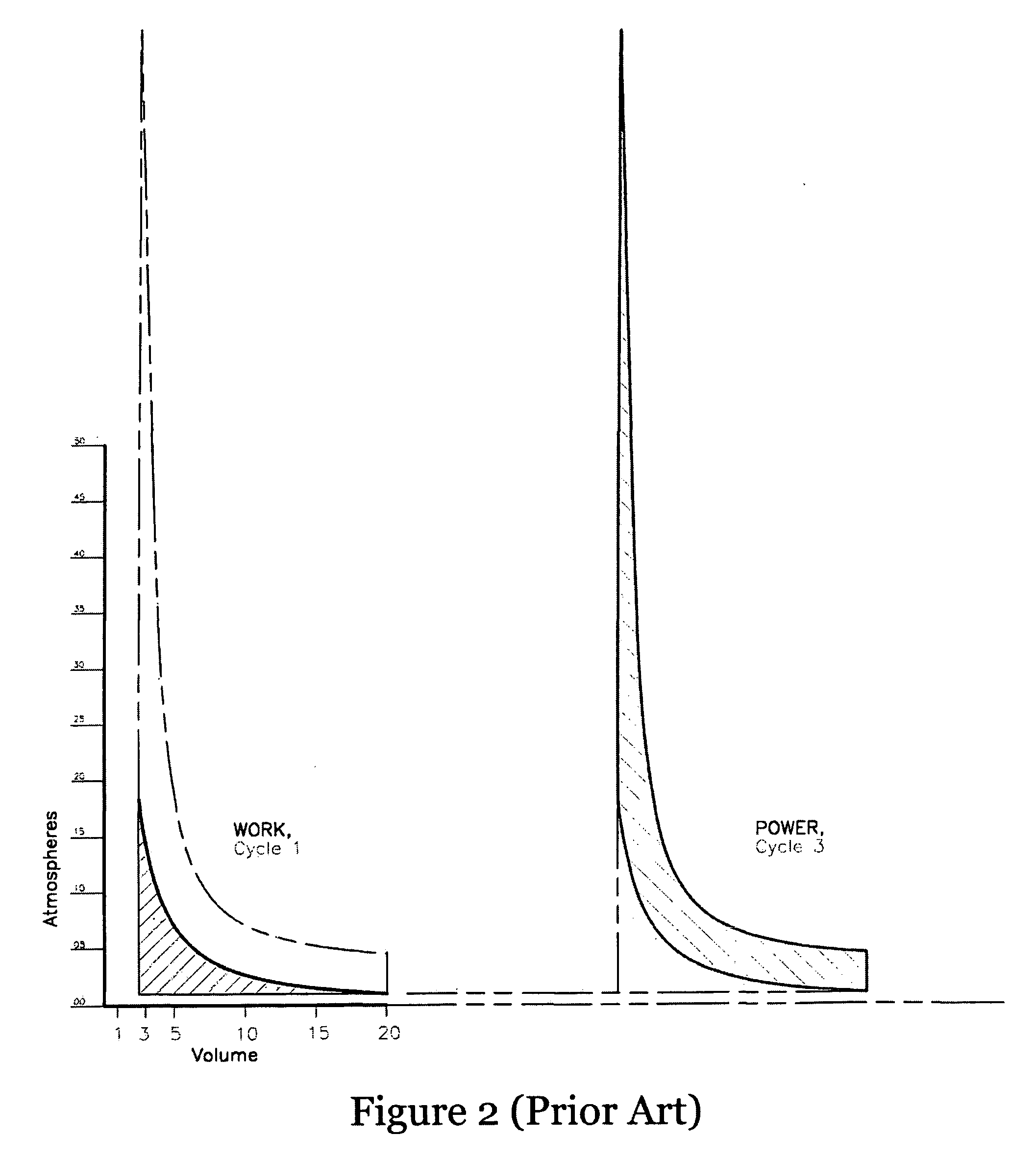Combustion engine
a combustion engine and combustion chamber technology, applied in the direction of engine starters, special engines, turbine/propulsion engine ignition, etc., can solve the problems of requiring an expensive catalytic converter system, the otto engine cannot use more than one fuel, and the power range of the utility engine between 10 hp and 40 hp is usually even less efficient, so as to minimize the requirements of engine packaging
- Summary
- Abstract
- Description
- Claims
- Application Information
AI Technical Summary
Benefits of technology
Problems solved by technology
Method used
Image
Examples
Embodiment Construction
[0049]FIG. 3 illustrates a schematic depicting a preferred embodiment of a Brayton cycle piston-type combustion engine 30 of the present invention that includes a reciprocable piston 32 received in a cylinder 34 defining a working fluid chamber 36 in which fluid, preferably air, drawn into the chamber 36 from an intake 38, e.g., intake manifold, during an intake stroke is compressed during a compression stroke before the compressed fluid is delivered to a combustion chamber 40.
[0050] In the preferred embodiment shown in FIG. 3, fuel from a fuel source 42, such as a fuel tank or the like, is delivered to the combustion chamber 40 where it is mixed with compressed fluid in the chamber 40. Combustion occurs causing the mixture to expand preferably at substantially constant pressure before it is directed to the same working fluid chamber 36 that previously compressed the fluid during the compression stroke. Expansion resulting from combustion increases pressure in the working fluid cha...
PUM
 Login to View More
Login to View More Abstract
Description
Claims
Application Information
 Login to View More
Login to View More - R&D
- Intellectual Property
- Life Sciences
- Materials
- Tech Scout
- Unparalleled Data Quality
- Higher Quality Content
- 60% Fewer Hallucinations
Browse by: Latest US Patents, China's latest patents, Technical Efficacy Thesaurus, Application Domain, Technology Topic, Popular Technical Reports.
© 2025 PatSnap. All rights reserved.Legal|Privacy policy|Modern Slavery Act Transparency Statement|Sitemap|About US| Contact US: help@patsnap.com



